Today's mailbag covers training at home, key parts of the body that generate power, developing footwork, motivating kids to box, foods to eat on fight day, and where to look at your opponent during sparring.
Do you have any tips for training myself at home? – "Trainer"
- Watch lots of videos and do something new everyday. Don't waste your time doing the same'old boring routines trying to outdo the number of push-ups you did yesterday. Be creative, watch different boxers and study different styles. Expand your mind as soon as you can. You have the rest of your life to get in perfect shape so instead, try to focus on becoming more aware of different techniques, methods, and possibilities of movement. Most important of all, try to get some friends over for light sparring. Trying to learn boxing without sparring anyone is like trying to get good at tennis by only playing against the wall. Boxing is not about throwing punches, it's about the simultaneous awareness of defense and offense.
These shorter guys in my gym hit like trucks! What part of the body is the main key to explosive punching power? – Wesley
- Serious punching power comes from your legs and hips! The legs are the biggest muscle on the body and they're connected to the ground which gives you something to push off of. If you want to generate the most power throughout your body, you definitely want to figure out how to incorporate your legs into the punch.
- Think of your hips as the weight behind the punch and muscle that rotates the punch. So your legs generate power off the ground but it's your hips that rotate the body launching the punch forward. The hips are also responsible for dropping your entire body weight into the punch.
- The reason why shorter guys can hit so hard is because there is less chance of bad form and energy loss during their punching motion. When you only have to move your arm a short distance, there is less chance that you will get off balance or fall into inefficient bad form. Shorter arms however, have the disadvantage of being short. It also helps that their hips and legs are a tighter unit and therefore more easily function as a solid motion.
- You might also notice that a lot of the taller guys (think Thomas Hearns) that hit hard, will attack with more of a whipping motion where their long limbs whip out punches like a slingshot. Their punches have a bit of a "relaxed stretch" before it quickly launches forward and gathers up momentum along the distance. Long armed fighters have trouble gathering power on the inside since their arms may have less weight and therefore require distance to pickup velocity before their punches have any real power.
What's the best way to develop footwork? – Anthony C
- Great footwork requires skill, relaxation, and a bit of conditioning. Probably the best exercise I've seen is jumping rope. Sure, you can do some footwork and feet coordination drills too but the probably is that so many guys rush and force their way through these drills and end up missing the point. Jumping rope will require you to be smooth and efficient as you skip and get your feet over the rope each time.
- Chances are: if you're asking me how to develop footwork, you probably need to jump rope more. Try to do it for 1-hour non-stop–it's ok if the rope gets caught on your feet, just reset and keep skipping. Work on your breathing, relaxing your mind and body, and moving around as you jump rope. I recommend nothing else than this for now.
Where should I look at my opponent during sparring? Is it the eyes, shoulders, chest, or hands? – Anthony
- Don't look at any single thing. Pay attention to all of the entire upper body, but be aware of any movement and prepare to react to it. I generally watch my opponent's upper body but I'm very aware of their distance and even foot placement. If they punch with one hand, I will react to it with a block or a slip or even a counter, but I will always still be watching their entire upper body. I never let my mind focus to just one thing.
- Think of it like driving: when you drive, you don't turn your head to look at every car or house that you pass, you just look forward. You are aware of other cars and you may react and steer around other cars but still, your eyes remain forward as you pay attention to what's coming next.
- A beginner driver is too focused on one object and easily gets into an accident because he or she can only process one thing at a time. An experienced driver pays attention to the entire terrain ahead and knows how to react to things without taking their awareness off everything else. Likewise in boxing, a beginner boxer can only block one punch and will usually get hit by the 2nd and 3rd whereas an experienced boxer can see just about anything because they don't over-focus on just one thing.
I am involved in a youth boxing center. How do I keep the kids motivated to come? – Chris
- Make it fun. Show them love and respect. Appreciate their presence, let them know that you care about them. Give them attention and let them know that you will care for them even if they never get any good at boxing. Unconditional love is a powerful and beautiful thing that changes people's lives.
- Understand that it's more important for kids to have fun and come back than for them to ever become a good boxer. Let them goof off and be a kid in the gym. It's much better for them to have fun in a gym around mature role models than having fun on the streets with God-knows-who. Boxing in its raw form can be about fighting, but don't let the environment become a competitive one where kids avoid each other and hold grudges against each other. Make it a positive environment, one where everyone is working together in the spirit of personal success and hard work. Avoid situations that produce "winners" and "losers".
- You have to protect the children from everything, even themselves. A lot of kids have messed up egos and false pride about being tough. They might tell you they want to spar hard but in reality, nobody really likes getting their ass kicked. You have to stop them before they hurt themselves. I see it all the time where kids try to overmatch themselves, get beat up badly, and never come back. The worst part about losing is not the physical pain, it's the mental. Some of them come home blaming themselves for the loss and take it way too personal. For some emotionally fragile youngsters, losing reminds them of everything bad that may have ever been said to them–parents telling them they're not worth anything, friends teasing them, anything. Even the toughest kids have a limit, protect them from that.
What should I feed my son on the day of the fight? – John
- Complex carbs (low glycemic food), nuts, banana, fruits, vegetables. Avoid processed food, cheese, red meat, ANY meat. Lots of water on the day of the fight (half cup every hour), but only sips from 2-3 hours onward. You don't want him to fight with any water in his stomach, that will increase the chance of him wanting to puke when his body performs at maximum intensity.





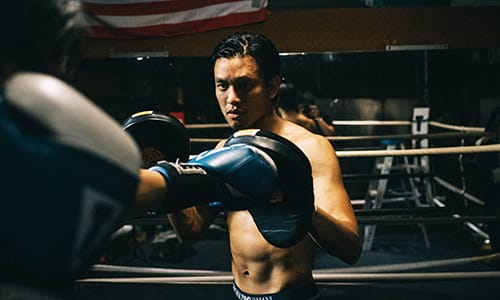
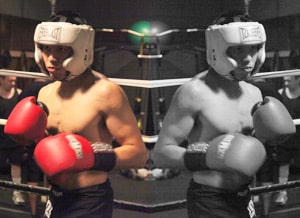
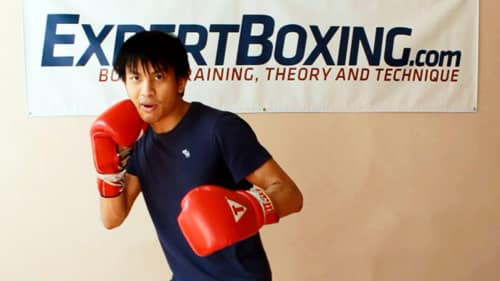
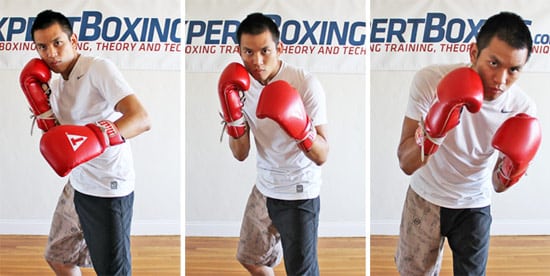
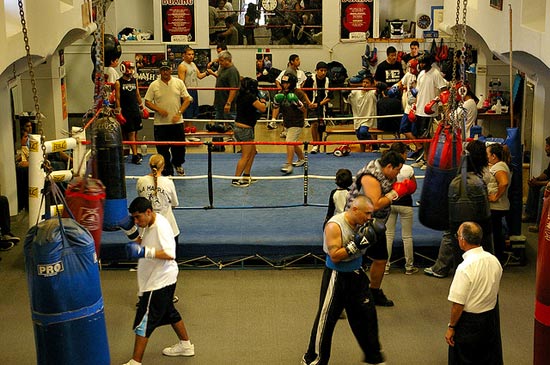
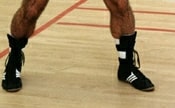
DamN!
yoo, u went hard on that motivation for kids in boxing! ill give u that! props
Health & Fitness Director
Great articles – very helpful and love the advice with kids. Im starting a school holiday program soon ‘boxing for teens’ to help with confidence and self esteem and of course fitness but it would be helpful if you have some ideas around doing some rounds but keeping it fun? Any ideas about incorporating games in some way without becoming competitive?
Thanks guys.
@Charlie – the best way to keep things from getting too competitive is:
1) force them to spar without overpowering each other. the person with the advantage has the responsibility of holding back and letting his opponent get a chance to recover and get some punches in. more often than not, they’re going too fast.
2) have them do team exercises, this can be taking turns holding each others feet while doing sit-ups, or 2-man push-ups where they take turns doing a push-up onto their knees and catch a medicine ball in the process. they can also stand on stability balls while they throw a medicine ball back and forth. they also alternate rounds on a heavy bag, each man throwing as many punches as fast as he can at the heavy bag for 15 seconds while the other one is holding the bag and motivating him (switch right after). you can also have them share a heavy bag or double-end bag. both will move around the bag and alternate between punching and moving. when one punches, the other one is moving, and vice versa. (as soon as one finishes punching, the other one must continue immediately, so that there is no lapse in punching).
3) Children do well when you make them teach each other. It can be more fun, more effective, and more respectful when the boxers are learning from each other. You can also have some guys light sparring while their teammates are telling them what their opponents are doing. (You want to be careful they’re not giving each other bad advice.) This is also helpful when you simply don’t have enough coaches to go around.
4) Introduce each new boxer to all the others when they first come in (especially introduce them to all the ones they will be sparring with). This is important, otherwise the new one will almost always go extra hard to earn respect!
severe tendonitis
Ok, so I am an older guy just getting into boxing(31). I did however train in MMA for about 5 years. I have a little knowledge on how to throw basic punches( although your website has helped me greatly on these aspects as well). However since I’ve started only boxing and hitting the heavy bag more my elbows are killing me. I am a physician so I know exactly what it is (medial epicondylitis) or golfers elbow. The frustrating thing is I can’t figure out why I’m getting it. I am definitely not hyperextending my arm when I punch the bag, but thats about all I know. I have noticed it only bothers me when I throw straight punches, hooks and uppercuts don’t bother me at all, only jabs and straight rights, what in the heck am I doing wrong?? Over pronating ? I am extremely frustrated because I would love to continue boxing and even compete but this is seriously taking all of the wind out of my sail, can you please help me?! I realize of course this might be asking a lot since there is no way you can actually see me punch , but any advice would be greatly appreciated. And thank you again for all the time you sacrifice for building this website and sharing your knowledge of this great sport, you are an inspiration.
Hi Joey H,
If you can show me a youtube video or something or you hitting the bag, that would help greatly.
As for the injury itself, it sounds to me like you’re suffering from one of these:
HYPER EXTENSION – you may be experiencing this even if you feel that you don’t. I have the same problem too. Even though my elbows don’t lock, if I throw my arm too straight I get the same injury as a hyper-extension even though I am anatomically unable to “hyper-extend”. Just make sure you don’t fully straight your arm, ever! Get use to throwing punches that only go to 98% full extension and doesn’t push into the final inch.
NOT TURNING THE PUNCH OVER – when you throw a straight punch, make sure your fist lands with the palm facing down (towards the floor). Record a video of yourself and make sure. A lot of fighters DO turn their fist over on straight punches but just not fast enough. You have to drill that corkscrew. Some fighters can punch with vertical fists and have no joint problems, but others can’t.
LIGHT GLOVES or BAD GLOVES – you shouldn’t be punching with anything less than 16oz. Even 14oz can be much too light if you are a hard puncher.
ELBOWS OUT OF POSITION – this is tricky to explain but here goes. when you’re not punching, the elbows should be facing down and tucked in towards your body. and then when you punch (straight punches), the elbows will quickly snap out and unwind so that the elbows are always behind the punch. when you throw the punch, you should only feel the force at the fist. you shouldn’t feel anything in your elbows. try to have your elbow behind the punch and not on the side of the punch.
Let me know if this works.
Johnny
Thank you so much for the quick response! And I’m glad you brought up the issue of elbow positioning , because this is something that I have been confused about for the past several months. I see some boxers that keep their elbows nice and close to their body as they throw their straight punches, but then I see others ala Tyson that position the elbows way out to the side when throwing their straights. I will definitely try to keep my elbows in more, I am going to use all of your advice this week and I’ll give an update at the end of the week, again thank you for giving so much of yourself for those of us who need guidance!
you mention tall fighters having a ‘relaxed stretch’ before throwing a shot, could you explain this in more detail
AHHHH DANGIT, AARON! That’s a secret that I’m going to release later! Hahahah.